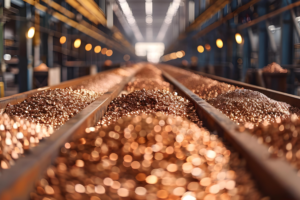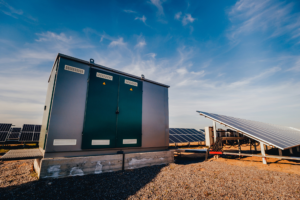Should I buy AGL Energy (ASX:AGL) as a turnaround play in FY26?

Should I buy AGL Energy (ASX:AGL)? As consumer seeing their electricity and gas bills go higher and higher, they may think it is a no brainer. After all, sonsumers may cut back on energy usage, but they cannot avoid spending altogether. They may shop around for better deals, but in all seriousness good luck to them because they’re going to need it.
AGL is down 28% in the last 12 months, it may not be the absolute worst performing stock in the ASX, but neither is it the best. Some investors like to buy the worst stocks of the indices, betting they’ll bounce back. In America, there’s a name for this strategy: The Dogs of the Dow. So, should you buy this Dog of the ASX?
Spoiler Alert: Maybe not.
What are the Best ASX Stocks to invest in right now?
Check our buy/sell tips

Who is AGL Energy?
AGL is a generator and seller of electricity and gas to Australian households and businesses. In fact, it is the largest of its kind in Australia. Here’s a bit of history to use at (investor) trivia nights: It was the second company to list on the Sydney Stock Exchange, joining as the Australian Gas Light Company.
Now for some ESG trivia: It is Australia’s largest carbon emitter, accounting for 8% of Australia’s national carbon footprint.
From a circus to champagne?
2022 was a horrible year for AGL. Mike Cannon-Brooks and a consortium led by him tried to take over the company because he had different ideas as to how AGL could shake off its identity as a major carbon emitter. The board conceived plans to split its coal business into a separate entity named Accel Energy. Before it could put the plans to shareholders for a vote, shareholder pressure led to the company not even putting the question to them. The scuttling of the plans led to four board members resigning and the company to undertake a strategic review of its operations.
Even after all this was over, scars remained. The company will have major capex requirements over the next decade to achieve Net Zero by FY35. Some estimates have suggested it would require up to $20bn in place before 2036 funded from assets on its balance sheet, offtakes and via partnerships. Sometimes investors can overlook boardroom dramas if the company is delivering for shareholders, but AGL was not. It made a 1HY23 loss of over A$1bn, hindered by extended outages at its ageing Loy Yang A and Hunter Valley power plants.
Is the future rosier?
From Easter 2023, the share price had a few good months. That was the time the effect of rate hikes were taking effect and companies left right and centre began admitting to shareholders customers are cutting back spending and their share prices are dropping like flies. Investors appeared desperate for safe havens – companies that will not experience declining demand or declining margins, preferably being able to do so while just servicing their customers as usual. AGL appeared to be an exemption given its results. It still made a $1.26bn statutory loss due, $680m of which was impairments, but it made $1.36bn in EBITDA (up 12%) and an underlying profit of $281m (up 25%). It told investors to expect $1.875-$2.175bn in EBITDA and a $580-780m profit.
In FY24, the company delivered what it promised on the bottom line with a $711m statutory profit including $156m of negative non-cash items, and a $812m underlying profit. The latter figure was nearly triple FY23. EBITDA was $2.2bn, up 63%. However, the company’s revenue was down 4% to $13.6bn.
FY25 a worse year
But AGL told investors to expect worse in FY25 $1.9bn-$2.2bn in EBITDA and a $530-730m underlying profit. Why the decrease? The company noted 4 factors
- Lower wholesale electricity prices through contract positions and the roll-off of increased volatility from market interventions in mid-2022
- Consumer margin compression following a period of heightened market activity and lower wholesale prices
- Broadly flat operating costs, with productivity and business optimisation benefits broadly offsetting the ongoing funding of strategic growth initiatives as well as inflationary impacts
- Increased depreciation and amortisation due to continued investment in the variability and flexibility of AGL assets.
The company met its guidance with $2bn EBITDA and a $640m underlying profit but both were down 9% and 21%. Its statutory loss was $98m including $598m of non-cash items, particularly ‘onerous contracts’. CEO Damien Nicks still said it was a strong financial year because operating costs were kept as flat as planned due to disciplined cost management.
Its guidance for FY26 was $1.9-2.2bn EBITDA and $500-700m underlying post-tax profit. It claimed the key drivers would be increased customer markets earnings due to an improvement in margins. sorry consumers, it seems prices are going up. Also helping would be an improvement in plant availability and fleet flexibility. The aforementioned factors would be partially offset by gas margin compression due to expiring gas supply contracts and higher growth investments.
Little licks, not big licks
AGL deployed $900m in battery developments and strategic investments. Some of this was the acquisitions of Firm Power, Terrain Solar and Kaluza for $400m all up, not to mention $500m to growth capex including the construction of the Liddell Battery.
What’s the big deal about this? Clearly AGL is trying to build its envisioned future of cleaner energy, but in ‘little licks’ rather than ‘big licks’. To put it into other words, buying smaller companies rather than making major acquisitions (i.e. over $1bn) or trying to build its own assets to replace its ageing coal fired power plants.
The goal remains for it to be Net Zero by FY35 and if it can get there through smaller acquisitions that can be funded through its balance sheet assets, without a need for debt or equity finance – good on the company.It is aiming to have 6GW in renewable and firming capacity by FY30, a target increased from 5GW from the previous climate plan. A new ambition to reduce ‘Scope 3 emissions’ by 60% compared to FY19 was achieved.
One key decision made so far in FY26 was reaching a Final Investment Decision on the 500 Mw Tomago Battery Project in the NSW Hunter Valley. This will cost $800m, will commence construction in 2025 and is anticipated to take 2 years, then last 20 years. AGL is on a ‘clear pathway to FID’ for a further 900MW of grid scale battery projects.
So, should I buy AGL shares? The valuation multiples may say yes, but …
AGL’s multiples are 9.3x P/E and 4.1x EV/EBITDA for FY26. Compelling at first glance, isn’t it? And the mean target price is $11.01, up 34% from the current price. But not when you look at consensus estimates. In FY26, analysts expect a retreat in revenue from $14.4bn to $14.25bn and a retreat in EPS from $0.95 to $0.89. EBITDA is expected to be slightly higher but only from $2.01bn to $2.09bn. In FY27, $14.5bn revenue, $2.16bn EBITDA and $0.92 EPS. Then in FY28, $14.7bn revenue, $2.2bn EBITDA and $0.90 EPS. You can see only slow revenue growth, virtually flat EBITDA growth and a stagnant bottom line.
You may disagree and think it can grow, but we remain uncertain that it can do better – or even that it can even meet those estimates – given to the company’s transition, even if it does so in ‘little licks’ (i.e. small investments of $500-1,000m a year vs $5-10bn upfront purchases of projects).
Investors who buy in need to watch closely, and have an exit strategy planned. And as we always say, no stock portfolio should be in just one company or sector. A portfolio must be well balanced between different sectors, companies and even different assets, to give investors the best possible chance of netting returns.
Blog Categories
Get Our Top 5 ASX Stocks for FY26
Recent Posts
Capstone Copper (ASX:CSC) Hits Record Production Despite Chile Strike: Is This Copper Giant a Buy?
Capstone Copper Achieves Record Production Despite Strike Capstone Copper (ASX: CSC) jumped 7% to AU$15.63 on Friday after the company…
1414 Degrees (ASX:14D) Surges 20% on AEMO Approval: Is This $9M Energy Stock a Buy?
1414 Degrees wins AEMO approval for Aurora battery link 1414 Degrees (ASX:14D) jumped 20% to A$0.030 on Friday after getting…


